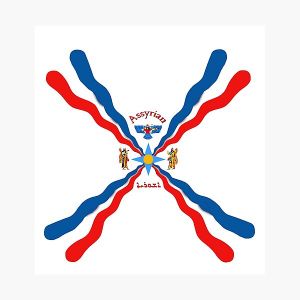Difference between revisions of "Language/Assyrian-neo-aramaic/Vocabulary/Months-of-the-year"
< Language | Assyrian-neo-aramaic | Vocabulary
Jump to navigation
Jump to search
(Created page with "*KANOON KHAARAAYAA - - - - January *SHVADT - - - - February *AADAAR - - - - March *NEESSAAN - - - - April *YAARR - - - - May *KHZEERRAAN - - - - June *TAAMUZ - - - - July *'T...") |
|||
| (5 intermediate revisions by 3 users not shown) | |||
| Line 1: | Line 1: | ||
{{Assyrian-neo-aramaic-Page-Top}} | |||
== Introduction == | |||
This lesson covers the Assyrian Neo-Aramaic names for the months of the year. Each month in Assyrian Neo-Aramaic not only has a unique name but also carries cultural significance, often tied to seasonal events, holidays, and historical traditions. | |||
== Vocabulary List == | |||
{| class="wikitable" | |||
! Month | |||
! Assyrian Neo-Aramaic | |||
! Cultural Significance | |||
|- | |||
| January | |||
| Kanon kharaya | |||
| A time for new beginnings; often marked by celebrations of the New Year. | |||
|- | |||
| February | |||
| Eshwat | |||
| Known for the cold weather; a period of preparation for spring. | |||
|- | |||
| March | |||
| Adar | |||
| Associated with the start of spring; agricultural preparations begin. | |||
|- | |||
| April | |||
| Nisan | |||
| Celebrated as the month of liberation and rebirth; includes holidays such as Kha b' Nisan (Assyrian New Year). | |||
|- | |||
| May | |||
| Iyar | |||
| Known for the blooming of flowers and moderate climate. | |||
|- | |||
| June | |||
| Khziran | |||
| Marks the beginning of summer; often associated with harvesting certain crops. | |||
|- | |||
| July | |||
| Tamoz | |||
| Characterized by hot weather; summer festivals are common. | |||
|- | |||
| August | |||
| Tabbakh (Ab) | |||
| Traditionally a month of harvest; celebrated for its agricultural significance. | |||
|- | |||
| September | |||
| Ilol | |||
| Marks the end of summer and beginning of autumn; harvest season continues. | |||
|- | |||
| October | |||
| Teshrin qamaya | |||
| Associated with cooler temperatures and the changing of leaves. | |||
|- | |||
| November | |||
| Teshrin kharaya | |||
| Known for the onset of winter; preparations for the cold season begin. | |||
|- | |||
| December | |||
| Kanon qamaya | |||
| Celebratory month with Christmas and New Year's Eve; a time of family gatherings and reflections. | |||
|} | |||
==Source== | == Source == | ||
http://www.learnassyrian.com/aramaic/time/time.html | http://www.learnassyrian.com/aramaic/time/time.html | ||
== Other Lessons == | |||
* [[Language/Assyrian-neo-aramaic/Vocabulary/Colors|Colors]] | |||
* [[Language/Assyrian-neo-aramaic/Vocabulary/Time|Time]] | |||
* [[Language/Assyrian-neo-aramaic/Vocabulary/Feelings-and-Emotions|Feelings and Emotions]] | |||
* [[Language/Assyrian-neo-aramaic/Vocabulary/Fruits|Fruits]] | |||
* [[Language/Assyrian-neo-aramaic/Vocabulary/Days-of-the-week|Days of the week]] | |||
* [[Language/Assyrian-neo-aramaic/Vocabulary/Animals|Animals]] | |||
* [[Language/Assyrian-neo-aramaic/Vocabulary/Family|Family]] | |||
* [[Language/Assyrian-neo-aramaic/Vocabulary/Education|Education]] | |||
* [[Language/Assyrian-neo-aramaic/Vocabulary/Food|Food]] | |||
* [[Language/Assyrian-neo-aramaic/Vocabulary/Greetings|Greetings]] | |||
<span links></span> | |||
Latest revision as of 00:32, 13 January 2024
Introduction[edit | edit source]
This lesson covers the Assyrian Neo-Aramaic names for the months of the year. Each month in Assyrian Neo-Aramaic not only has a unique name but also carries cultural significance, often tied to seasonal events, holidays, and historical traditions.
Vocabulary List[edit | edit source]
| Month | Assyrian Neo-Aramaic | Cultural Significance |
|---|---|---|
| January | Kanon kharaya | A time for new beginnings; often marked by celebrations of the New Year. |
| February | Eshwat | Known for the cold weather; a period of preparation for spring. |
| March | Adar | Associated with the start of spring; agricultural preparations begin. |
| April | Nisan | Celebrated as the month of liberation and rebirth; includes holidays such as Kha b' Nisan (Assyrian New Year). |
| May | Iyar | Known for the blooming of flowers and moderate climate. |
| June | Khziran | Marks the beginning of summer; often associated with harvesting certain crops. |
| July | Tamoz | Characterized by hot weather; summer festivals are common. |
| August | Tabbakh (Ab) | Traditionally a month of harvest; celebrated for its agricultural significance. |
| September | Ilol | Marks the end of summer and beginning of autumn; harvest season continues. |
| October | Teshrin qamaya | Associated with cooler temperatures and the changing of leaves. |
| November | Teshrin kharaya | Known for the onset of winter; preparations for the cold season begin. |
| December | Kanon qamaya | Celebratory month with Christmas and New Year's Eve; a time of family gatherings and reflections. |
Source[edit | edit source]
http://www.learnassyrian.com/aramaic/time/time.html
Other Lessons[edit | edit source]
